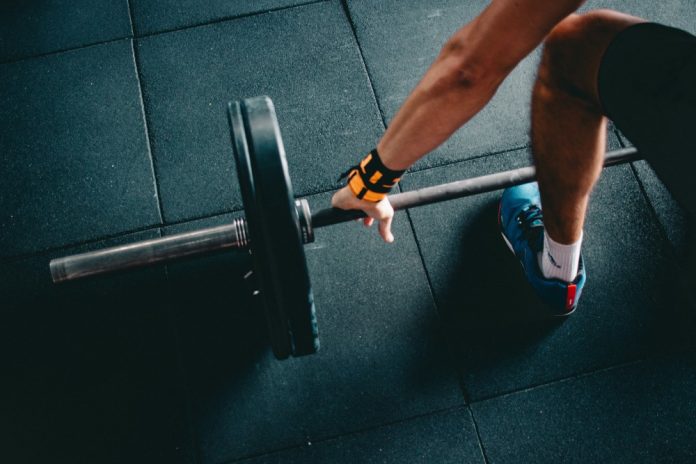A recent study suggests that combining a high load resistance exercise for a muscle group (such as relatively heavy dumbbell bicep curls) with a low load exercise (such as very light weight dumbbell bicep curls for many repetitions) is superior for building muscle than just the high load exercise, and that low load exercise is not actually useless or inhibitory for muscle growth.
Recent research finds that resistance training alone is inferior to resistance training combined with endurance training (in this case, moderate intensity cycling) in terms of markers of muscle anabolism (growth)1. This is contrary to the popular opinions that resistance training is the only form of hypertrophic (muscle growth inducing) exercise, that low intensity exercise inhibits muscle growth and that it may actually cause muscle breakdown. Therefore, this study suggests that combining a high load resistance exercise for a muscle group (such as relatively heavy dumbbell bicep curls) with a low load exercise (such as very light weight dumbbell bicep curls for many repetitions) is superior for building muscle than just the high load exercise, and that low load exercise is not actually useless or inhibitory for muscle growth.
Prior research has demonstrated that combining strength and endurance training results in less strength gained than strength training alone1. This is called the “interference effect”1. However, it is not known whether this effect also occurs when looking at outcomes of muscle growth or proxies of muscle growth. mTOR (stimulated by resistance training) causes muscle growth and AMPK (stimulated by endurance training to cause aerobic adaptations) limits muscle growth1, so these markers can be used as proxies to see if a muscle is in an anabolic (growing) state.
This study looked at the effects of resistance training alone (RES), resistance training with moderate intensity cycling (RES+MIC) or resistance training with high intensity interval cycling (RES+HIIC) on the mTOR and AMPK levels in the vastus lateralis muscle (VL) in the frontal thighs of cyclists before and 3 hours after an exercise protocol. Surprisingly, the RES group had the lowest mTOR 3 hours post-exercise, RES+HIIC had a higher mTOR and RES+MIC had the highest mTOR1. This finding suggests that there was a greater anabolic response in the VL muscle of the resistance training group which did a low load exercise (moderate intensity cycling) after a high load exercise (back-squat, presumed to be with a barbell).
However, AMPK also showed the same trend post-exercise (AMPK was lowest in RES and highest in RES+MIC)1. This is an interesting finding as AMPK and mTOR are expected to be antagonists due to opposing functions in terms of anabolism, but both showed similar trends suggesting that they do not interact with each other but are instead independently stimulated.
Can it be concluded from this research that combining resistance and endurance training is optimal for muscle growth? No, as this study has massive limitations. Firstly, the cyclists are endurance trained athletes so it is expected that they have adapted to endurance exercise so have a less stressful response and therefore may more likely have a less catabolic response when endurance exercise is introduced (for example less elevation in AMPK may have been observed than if regular people were studied); regular people would probably respond differently in terms of biomarkers. Secondly, AMPK promotes catabolic (breaking down muscle) processes2 so the increase in AMPK in the RES+MIC group could represent an increase in muscle catabolism which is contrary to the message of the study which suggests to readers that combining resistance training and endurance exercise is more likely conducive to muscle growth. Thirdly, the study did not look at net muscle protein turnover (when anabolic and catabolic processes are included, whether the net effect is anabolic or catabolic). Lastly, the study had only 8 volunteers were included in the study which means each group had 2-3 people per group which makes the margin for error massive in the study. Therefore, this study should likely not be used as prescription for physical exercise as the actual outcomes of muscle development were not explored with regards to non-endurance-adapted individuals, but it sheds light onto the effects of varying forms of exercise on biomarkers of muscle development.
***
References:
- Jones, T.W., Eddens, L., Kupusarevic, J. et al. Aerobic exercise intensity does not affect the anabolic signaling following resistance exercise in endurance athletes. Sci Rep 11, 10785 (2021). Published: 24 May 2021. DOI: https://doi.org/10.1038/s41598-021-90274-8
- Thomson D. M. (2018). The Role of AMPK in the Regulation of Skeletal Muscle Size, Hypertrophy, and Regeneration. International journal of molecular sciences, 19(10), 3125. https://doi.org/10.3390/ijms19103125
***






































